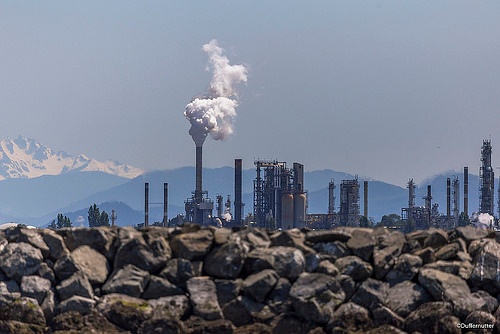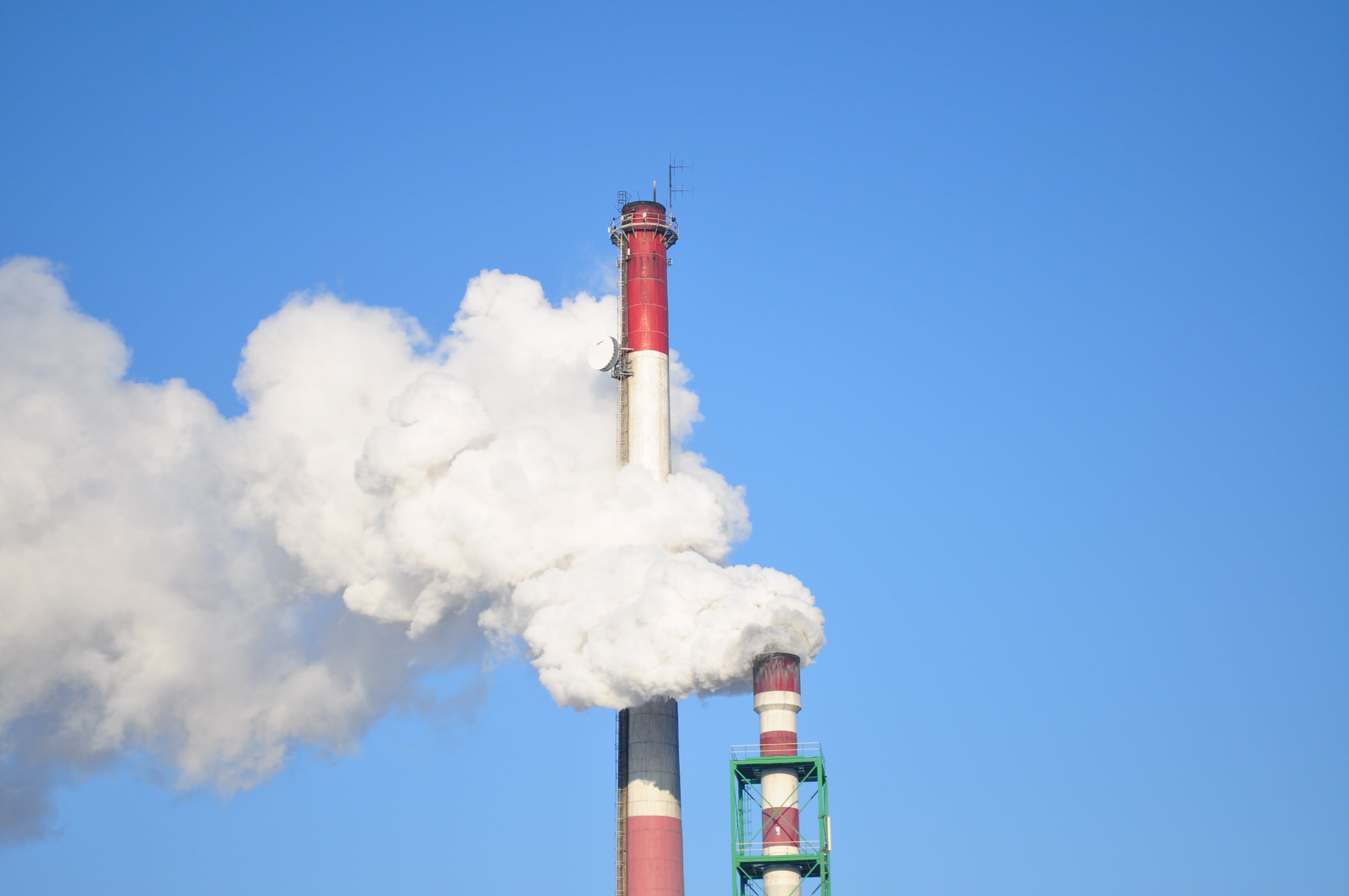In September 2025, California extended and amended authority for its statewide greenhouse gas (GHG) “cap and trade” program through 2045 – and rebranded it as “cap and invest.” The California Air Resources Board (ARB) has administered this program since 2012, as part of broader GHG reduction provisions created by 2006’s Assembly Bill (AB) 32. AB 32 initially committed the state to reduce total GHG emissions back to 1990 levels by 2020 (achieved in 2018); ARB’s latest GHG reduction scoping plan (issued in 2022), seeks to reduce statewide emissions to 85% below 1990 levels by 2045, achieving carbon neutrality. Subsequent legislation extended implementing authority for cap-and-trade and other related programs available to the California Air Resources Board (ARB) and other agencies through 2030. (I wrote about that extension (AB 398) HERE ). The newest legislation (AB 2017 and Senate Bill (SB) 840) continues the state’s GHG reduction efforts by making further changes to ARB’s cap and trade authority. The rest of this note summarizes these changes.
Read MoreAudit, Compliance and Risk Blog
California Extends and Amends its Greenhouse Gas Cap and Trade Program
Posted by Jon Elliott on Fri, Oct 17, 2025
Tags: climate change, sustainability, cap-and-trade, California, Climate, Carbon markets, Environmental Compliance, Climate Risk, California Regulations, Greenhouse Gas Emissions, GHG Reduction, cap-and-invest, California Air Resources Board
California proposes regulations for phase-out of non-recyclable single-use plastics
Posted by Jon Elliott on Fri, Jul 25, 2025
The California Department of Resources Recycling and Recovery (CalRecycle) has published a revised set of proposed regulations to implement 2022’s Senate Bill (SB) 54, the “Plastic Pollution Prevention and Packaging Producer Responsibility Act.” (I wrote about the legislation HERE). The Act phases in a ban on non-recyclable single-use plastics by 2032, and requires that threshold proportions of single-use items sold as “recyclable” will actually be recycled. Its implementation will make use of “extended producer responsibility” (EPR) mechanism similar to those used in California and elsewhere for other enhanced recycling programs (I’ve written about these before, most recently HERE). The remainder of this note discusses the proposed regulations and SB 54’s provisions.
Read More
Tags: sustainability, California, California Environmental Law, Plastic Waste, Sustainability Reporting, Sustainability Strategy, SB54, California Regulations, CalRecycle, Plastic Pollution
California revises greenhouse gas emission and financial risk reporting laws
Posted by Jon Elliott on Tue, Nov 12, 2024
On September 27, 2024, California’s governor Gavin Newsom signed Senate Bill (SB) 219, amending greenhouse gas (GHG) emission reporting requirements for targeted organizations doing business in the state, enacted in 2023 (SB 253 (Wiener) (Climate Corporate Data Accountability Act) and SB 261 (Stern)) and initially scheduled to require compliance beginning January 1, 2025. (I wrote about them HERE) SB 219 revises and delays emissions reporting requirements. The revised requirements will still be administered by the California Air Resources Board (ARB), expanding its longstanding air quality and climate authority (GHG provisions center on the Global Warming Solutions Act of 2006 ((AB 32)). The remainder of this note discusses the revisions made by SB 219.
Read More
Tags: California Legislation, Environmental risks, Environmental, Greenhouse Gas, Environmental Projects, California, Environment, Environmental Policy
California adopts general requirements for workplace violence prevention
Posted by Jon Elliott on Fri, Dec 15, 2023
On September 30, 2023, California’s governor Gavin Newsom signed Senate Bill (SB) 553, which expands the state’s workplace violence prevention (WVP) requirements, adding duties and rights for most employers in the state. Most importantly, SB 553 requires all non-exempt employers in the state to create WVP plans. These expanded requirements will be administered by California’s Division of Occupational Safety and Health (DOSH, but generally referred to as “Cal/OSHA”), which already administers WVP planning requirements for healthcare employers (which I wrote about HERE), and has been working on a general rule (I wrote about the latest draft HERE). The remainder of this note discusses SB 553, which takes effect on January 1, 2024 but remains subject to further rulemakings.
Read MoreTags: Workplace violence, California, DOSH, WVP, IIPP
On October 7, 2023, California’s governor Gavin Newsom signed two important bills expanding climate-related reporting requirements for targeted organizations doing business in the state – SB 253 (Wiener) (Climate Corporate Data Accountability Act) and SB 261 (Stern). These requirements will be administered by the California Air Resources Board (ARB), which already includes most state greenhouse gas (GHG) regulatory requirements within its extensive air quality and climate authority (centered on the Global Warming Solutions Act of 2006 (AB 32). The remainder of these note discusses these new requirements.
Read MoreTags: Environmental, Greenhouse Gas, ghg, California, Environment, Environmental Policy
Regulatory and market-based programs are steadily increasing opportunities for entities to contract with projects that reduce emissions of carbon dioxide and other greenhouse gases (GHGs), and to claim credit for those “carbon offsets.” Some such claims are used to satisfy formal air quality and GHG reduction requirements, while others are touted to enhance entities’ “green” credentials. Programs around the globe compile such claims, and some provide third party validations – but possible “greenwashing” of unjustified claims remains a significant concern. To address these concerns, California has just enacted legislation to regulate Voluntary Cabon Market Disclosures and penalize noncompliance (Assembly Bill (AB) 1305, Gabriel). These requirements synthesize the most thorough voluntary disclosure programs, and are intended not only to protect California consumers but to codify disclosure standards. The rest of this note summarizes carbon offsets, and AB 1305 requirements.
Read MoreTags: Environmental, Greenhouse Gas, greenhouse, California, Environment, Environmental Policy, environmental protection
California adopts nonemergency COVID vaccination and testing rules
Posted by Jon Elliott on Mon, Jan 23, 2023
Since 2021, occupational safety and health agencies have enacted a variety of rules addressing the workplace hazards of the COVID-19 pandemic. Agencies have generally used their emergency authority, which allow more administrative leeway to speed enactment but then require automatic expiration within months (although re-enactments are possible). I’ve written about a number of these efforts, including the federal Occupational Safety and Health Administration (OSHA) “emergency temporary standard (ETS),” which was stymied by litigation (see HERE). Some states have enacted their own ETSs; California adopted its own ETS and then readopted it every 180 days in order to keep rules in force (see HERE).
Read MoreTags: Coronavirus, Covid-19, California
California phasing out non-recyclable single-use plastics
Posted by Jon Elliott on Mon, Aug 08, 2022
On June 30, 2022, California governor Gavin Newsom signed state Senate Bill (SB) 54, enacting the “Plastic Pollution Prevention and Packaging Producer Responsibility Act.” The Act phases in a ban on non-recyclable single-use plastics by 2032, and requires that threshold proportions of single-use items sold as “recyclable” will actually be recycled. Its implementation will make use of “extended producer responsibility” mechanism similar to those used in California and elsewhere for other enhanced recycling programs (I’ve written about these before, most recently HERE and HERE). The new Act will be overseen by the California Department of Resources Recycling and Recovery (CalRecycle). The new Act complements a variety of other state programs, many also overseen by CalRecycle. The remainder of this note discusses SB 54’s provisions.
Read MoreTags: California, Environment, plastics, microplastics
California continues temporary requirements for COVID vaccination and testing
Posted by Jon Elliott on Mon, Jun 06, 2022
As public and occupational health agencies around the world continuously reevaluating their responses to the developing COVID-19 pandemic, California has again weighed in on the side of continuing formal controls. Effective May 5, 2022, California has revised and extended its COVID-19 Prevention Emergency Temporary Standard (ETS) until January 1, 2023. (I wrote about the most recent previous iteration adopted in February HERE). The ETS is presented as 5 rules, which are administered by California’s Division of Occupational Safety and Health (DOSH, but universally called Cal/OSHA). The remainder of this note summarizes these revised standards, which appear in Title 8 of the California Code of Regulations (CCR):
Read MoreTags: Health & Safety, OSHA, Safety and Health at Work, Covid-19, workplace safety, California, Vaccination, Healthcare
Discharges of plastics into the environment are steadily increasing, both in aggregate amounts and in associated environmental and health concerns. The United Nations has estimated that plastic debris accounts for at least 85 percent of total marine waste; an estimated 11 million metric tons of plastic enter the world’s oceans annually, and on current trends this will triple by 2040. In response to these concerns, the state of California is creating laws and regulations intended to reduce plastics discharges in the state. In addition to plastics recycling requirements (the state “bottle bill” and others), California has created a focus on “microplastics.” In February 2022, the California Ocean Protection Council (OPC) adopted a new Statewide Microplastics Strategy (the Strategy); the rest of this note provides general background on California’s approaches to plastics and microplastics, and summarizes the Strategy.
Read More
Tags: California, Environment, plastics, microplastics










